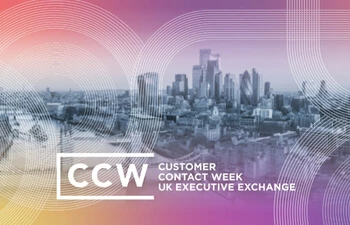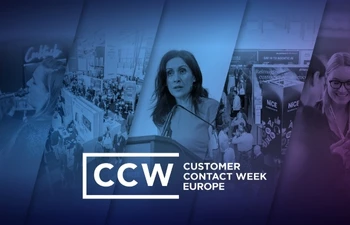How to Measure Customer Service Excellence
Add bookmark
Achieving customer service excellence is the factor that could determine whether your business stands apart from your competitors’, but how do you know if your customer service truly meets or exceeds expectations?
The answer lies in understanding how to measure this. Here we break down why customer service excellence matters, and we explore the most effective methods to do it right.
Why measuring customer service excellence matters
Before we explore the “how,” it’s worth understanding the “why.” Measuring excellence in customer service is not just about keeping score – it’s about identifying trends, driving improvement and making strategic decisions that elevate the customer experience.
A high standard of customer service builds trust, fosters loyalty, and often leads to positive word-of-mouth, all of which are critical to long-term business success. By measuring performance, companies can celebrate what’s working, address what isn’t, and ultimately differentiate themselves in the marketplace.
Key metrics for measuring customer service excellence
These metrics can help you determine how your company is performing in terms of customer service.
Net promoter score (NPS)
Arguably the most widely used metric, this measures loyalty by asking how likely customers are to recommend your brand on a scale of 1 to 10. Based on their responses, your customers can be split into three categories:
- Promoters. Respondents who answer 9 – 10 are very satisfied, happy customers and likely to recommend you to others.
- Passives. Respondents who answer 7– 8 are satisfied but not likely to recommend your products or services.
- Detractors. Respondents who answer 6 and below are dissatisfied and will not encourage others to patronise your business.
In practice, you can ask customers to submit their score via an automated email or text after their purchase or interaction. Subtract the number of detractors from the number of promoters and divide this by the total number of responses; the result is your NPS score. Ideally, you want this number to be as close to 100 as possible.

NPS is easy to implement and to understand, but it has raised criticism for being too simplistic. For instance, it doesn’t tell you why customers feel the way they do.
Customer satisfaction score (CSAT)
A similar methodology to NPS, this can give you a quick snapshot of a customer’s level of satisfaction after interactions. It is typically collected through short surveys or feedback forms that ask simple questions such as ranking their experience on a scale of 1 (very dissatisfied) to 5 (very satisfied).
To calculate your score, you first need to determine how many customers gave you a positive rating of 4 or 5. Divide this by the total number of responses and multiply by 100 to get the CSAT score.

You can also follow this up with open-ended questions to gain more insights, for example asking how their experience could be improved.
This scoring method is often used in customer support environments immediately after interactions such as live chats or calls, so can be very useful at giving you an indicator of how individual aspects of your business are performing. However, it is limited to immediate short-term impressions and therefore one less-than-good experience could influence your overall score.
Social media monitoring
Many people turn to social media to express dissatisfaction, or if they are especially happy with a service or product. By monitoring negative and positive comments, mentions of the company, and technical questions, you can gain a deeper insight into how your brand is perceived, detect issues before they escalate and respond quickly to both complaints and compliments.
To do this, you’ll need to implement a tool that can track customer sentiment and spot recurring issues. This is particularly beneficial if you have a large customer base and require reputation management.
On the other hand, a large volume of data could include off-topic conversations, spam and even bot-generated comments that make it difficult to identify useful feedback, so a degree of human oversight is essential to assess what the algorithms may miss.
Support tickets
Tracking the number of support tickets you receive and analysing these over time can give you valuable insights and help detect specific issues. For example, you could track the most common types of issue and how frequently it reoccurs, along with response and resolution times and whether these need improving.
Unlike NPS and CSAT this is a qualitative approach so requires deeper analysis, especially if you have high ticket volumes. Applications such as customer relationship management (CRM) software can include automation to help with this.
Determining if any agents require support is another benefit of this approach. However, it only reflects the experiences of customers that reach out with a problem, so it won’t give a true picture of how your brand is perceived.
Staff satisfaction
Last but certainly not least, keep track of how satisfied and engaged frontline staff are. Employees handling customer interactions on a daily basis such as contact centre agents are the first point of contact customers have with your business, and as such a significant portion of your brand reputation hinges on this. A happy workforce leads to happy customers.
Yet, according to our market study on the Future of Contact Centre Agents, 23 percent of CX executives in the CCW Europe community do not currently measure levels of contact centre agent satisfaction.
A proven method to capture agent satisfaction is through surveys that explore factors influencing engagement and possible causes of dissatisfaction. These could include their workload, recognition and awards, training and support, and the technology and tools they have available.
How to Make Customer Service Workers Feel Valued
Discover how to reduce staff turnover and empower employees through this case study analysis of two major influential businesses.
Read MoreTo achieve customer service excellence, use a blended approach
No single metric can capture the full spectrum of customer service excellence. The best way to do this is to use multiple methods to create a holistic view. Here’s an example of a practical, layered approach:
- Start with NPS and CSAT to capture loyalty and satisfaction trends. Use automated tools to send out surveys after an interaction, via email or after a live chat or call. Some CRM platforms also integrate NPS and CSAT monitoring.
- Dig deeper with qualitative feedback, analysing open-ended survey responses using analytics platforms. This allows customers to explain their experiences in their own words, which can reveal nuanced issues or highlight areas that metrics alone might miss.
- Track support ticket trends to identify recurring problems or service gaps. Tools like CRM and help desk software can automate much of this tracking, giving you ongoing insights into service performance at an operational level.
- Monitor social media to stay ahead of public sentiment and emerging issues. Consider implementing tools that can track brand mentions, hashtags, and customer sentiment across different social platforms and review sites.
- Measure staff engagement and performance. Use regular internal surveys to assess staff morale, workload, access to training, and the usability of tools and systems.






















